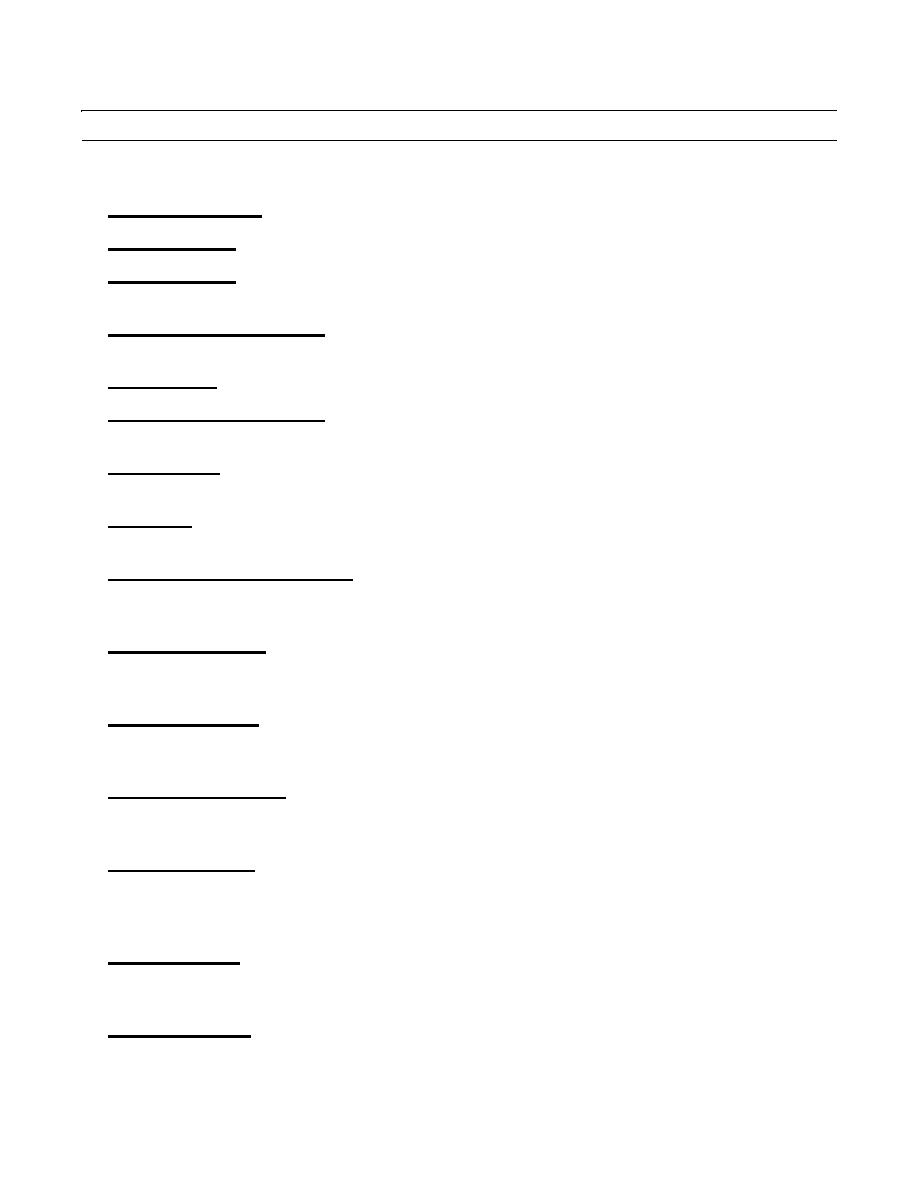 |
|||
|
|
|||
|
|
|||
| ||||||||||
|
|
 TM 10-3930-660-24-1
THEORY OF OPERATION - CONTINUED
0003 00
HYDRAULIC SYSTEM
0003 00
Hydraulic Oil Reservoir. Contains oil for the entire hydraulic system.
1.
Hydraulic Oil Filter. Removes smaller harmful particles from the oil before the oil is returned to the reservoir.
2.
Main Control Valve. Located on the engine compartment bulkhead of the main frame (near back of transmission). Con-
3.
trols two boom functions: boom hoist/lowering and extend/retract.
4.
MLRS Attachment Control Valve. Mounted on the attachment, controlled by an electrical joystick and electrical cable
down the length of the boom. Controls three attachment functions: hoist/lowering, fork tilt, and fork side shift.
5.
Frame Tilt Valve. Mounted inside the console located to the right of the operator seat. Controls tilting of vehicle frame.
Hydraulic Joystick Control Valve. Located on side console in cab. Controls boom functions: raise, lower, extend, and
6.
retract.
7.
Dual Gear Pump. Mounted to the transmission. This two-section pump supplies functions: boom hoist, boom extend,
steering, brake and frame tilt.
8.
Piston Pump. Mounted to the transmission. This pump supplies the following functions: attachment hoist, fork tilt, left
fork control, right fork control, load side shift control.
9.
Emergency Steering Pump and Motor. Located in the vehicle forward of the transmission. This pump supplies 5 gpm
(19 1/min) of emergency flow to the steering system whenever the ignition is on and there is a loss of hydraulic and
engine oil pressure. The pump is driven by an electric motor.
10. Fork Sideshift Cylinders. These are two cylinders controlled by one joystick control. The joystick controls sideshift, the
left fork and right fork functions. Both cylinders can be operated at the same time to sideshift forks left or right, to move
forks together or apart. Also, the cylinders can be operated individually.
11. Carriage Tilt Cylinders. These are two cylinders controlled by the fork tilt joystick control. Moving the lever to the right
causes the cylinders to extend and the fork tips to raise. Moving the lever to the left causes the cylinder to retract and the
fork tips will lower.
12. Attachment Hoist Cylinder. This cylinder is controlled by the attachment hoist control joystick. When the lever is
pushed forward, pressure oil from the hydraulic reservoir causes the cylinder to retract. When the lever is pulled back, the
cylinder will extend and raise the MLRS attachment.
13. Boom Extend Cylinder. This cylinder is controlled by the boom extend and retract joystick control. Moving the lever to
the left causes the cylinder to retract and moves the MLRS attachment near to the vehicle. Moving the lever to the right
causes the cylinder to extend and increase the reach distance or the height of the forks, depending on the angle of the
boom.
14. Frame Tilt Cylinder. This cylinder is controlled by the frame tilt control joystick. When the lever is moved forward,
pressure oil from the hydraulic oil reservoir causes the cylinder to retract and tilt the vehicle to the left. Pulling the lever
back causes the cylinder to extend and tilt the frame to the right.
15. Boom Hoist Cylinders. There are two cylinders controlled by the boom hoist control joystick. When the lever is moved
forward, pressurized oil from the hydraulic oil reservoir causes the cylinder to retract. Moving the lever backward causes
the cylinder to extend.
0003 00-6
|
|
Privacy Statement - Press Release - Copyright Information. - Contact Us |